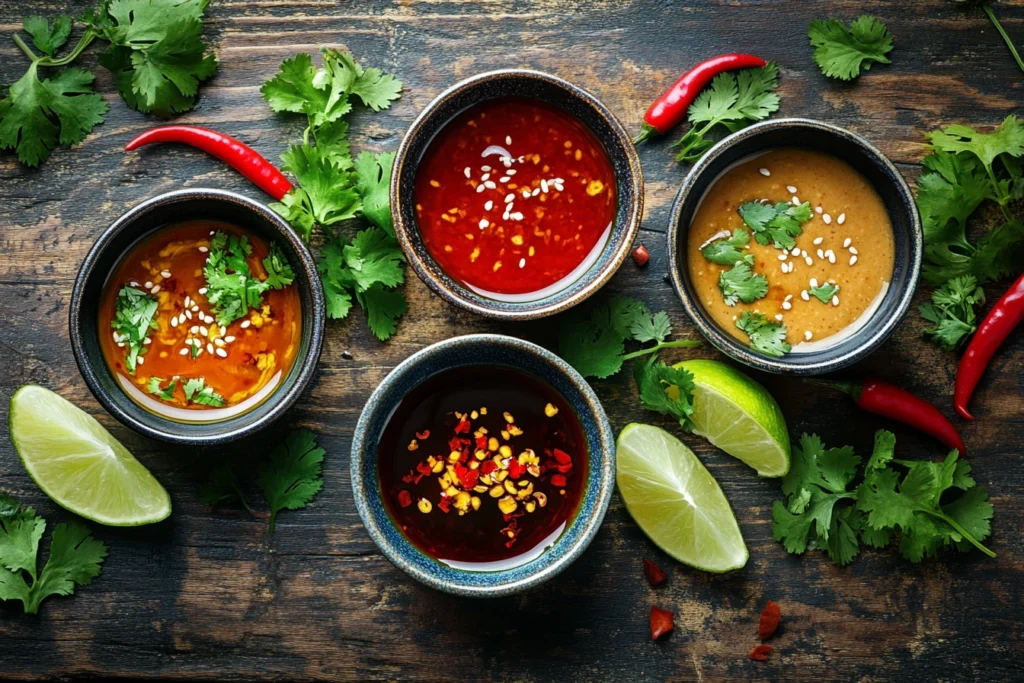1. Introduction to Asian Street Meat
Asian street meat, Imagine strolling through a bustling night market, the air thick with tantalizing aromas of sizzling meats and aromatic spices. Asian street meat is more than just food; it’s an immersive experience that captures the essence of diverse cultures and traditions. From the smoky skewers of Southeast Asia to the crispy delights of East Asia, these dishes tell stories of communities, histories, and shared passions.
Street meat is not only affordable and convenient but also represents the heart of community dining in many Asian countries. Whether enjoyed at bustling night markets or roadside stalls, it provides an unforgettable experience for food lovers.
This article explores the history, preparation techniques, and cultural importance of Asian street meat. It also covers popular dishes, cooking tips, and recipes, making it a comprehensive guide for anyone looking to learn about or recreate these delicious dishes at home.
2. The History and Cultural Significance of Asian Street Meat
The tradition of street meat in Asia dates back centuries, serving as sustenance for travelers, laborers, and traders. These accessible and affordable meals not only satisfied hunger but also fostered social interactions, becoming integral to community life. In countries like China and Japan, grilled meats were central to festivals and religious ceremonies, symbolizing prosperity and unity. Today, this rich heritage continues, with street vendors innovating while preserving authentic flavors.
2.1 Historical Background
Street food markets in Asia have served as cultural hubs for trade and social interaction since ancient times. Vendors initially served laborers, traders, and travelers by preparing and offering roasted meats and skewers quickly.
In regions like China and Japan, grilled skewers became a staple during festivals and religious celebrations. In Southeast Asia, marinated meats cooked over open flames gained popularity due to their smoky aroma and bold flavors. These traditions have continued to evolve, blending indigenous spices with global influences to create unique recipes.
2.2 Cultural Relevance
Asian street meat plays an important role in community gatherings and local festivities. It reflects cultural values that emphasize shared meals and social bonding. Night markets, in particular, have become popular tourist attractions, showcasing a wide variety of meat-based dishes.
In countries like Thailand and Vietnam, vendors frequently pair skewers and grilled meats with sticky rice and fresh vegetables, integrating them into daily meals. In Korea, people often enjoy fried chicken and grilled pork belly during social drinking sessions, emphasizing the connection between food and entertainment
Beyond its cultural appeal, street meat has also become a symbol of culinary innovation. Vendors often experiment with marinades, sauces, and spices, resulting in new flavors that keep the tradition exciting and relevant.
3. Popular Types of Asian Street Meat
Asian street meat offers an incredible variety of flavors, cooking methods, and ingredients. From grilled skewers to deep-fried delights, these dishes highlight the culinary creativity and traditions of different regions in Asia.
3.1 Grilled and Skewered Meats

Grilled and skewered meats are among the most iconic forms of Asian street food. They are often marinated in rich sauces and cooked over open flames, delivering smoky aromas and bold flavors.
Yakitori (Japan): Tender chicken pieces skewered and grilled, often seasoned with tare sauce, embodying the minimalist yet profound flavors of Japanese cuisine.
Satay (Indonesia and Malaysia): Marinated meats like chicken, beef, or lamb, grilled and served with a luscious peanut sauce, reflecting the rich spice heritage of Southeast Asia.
Kebabs (Central Asia): Charcoal-grilled lamb or chicken skewers seasoned with cumin and paprika are commonly sold in markets across Central Asia.
Moo Ping (Thailand): Sweet and savory grilled skewers marinated in garlic, soy sauce, and palm sugar, epitomizing Thai street food’s bold flavors.
Korean Fried Chicken (South Korea): Crispy, double-fried chicken glazed in spicy or sweet sauces, showcasing Korea’s flair for texture and taste.
Lechon (Philippines): Whole roasted pig with irresistibly crispy skin, often the centerpiece of festive occasions, highlighting Filipino communal dining traditions.
3.2 Fried and Roasted Meats
Fried and roasted meats are prized for their crispy textures and bold seasonings. These options are widely available in markets and food carts.
Korean Fried Chicken (South Korea): Double-fried for extra crispiness and coated in spicy or sweet sauces, it is a favorite snack during social gatherings.
Lechon (Philippines): A whole roasted pig cooked over an open flame until the skin becomes golden and crispy. For seafood lovers, dishes like a Seafood Boil Recipe offer a flavorful alternative to traditional meat-based street foods.
Chuan (China): Spicy lamb skewers seasoned with cumin and chili flakes, grilled to perfection and served with dipping sauces.
3.3 Exotic Offerings
Asian street meat also features exotic options that showcase adventurous flavors and unique ingredients.
Balut (Philippines): A fertilized duck egg served with a savory broth-like flavor, enjoyed as a delicacy.
Insects (Thailand and Cambodia): Protein-rich snacks like fried crickets, grasshoppers, and scorpions are sold in night markets.
Yakitori Cartilage and Skin (Japan): These parts are grilled and seasoned, offering crunchy and chewy textures that pair well with drinks.
4. Ingredients and Seasonings in Asian Street Meat
Recreating these street delights at home involves understanding key techniques:
4.1 Marinades and Rubs
Marinades and rubs play a key role in infusing flavor into the meat before cooking. They tenderize the meat and add depth to each bite. Explore more marinade recipes and grilling tips for Asian street meat at Serious Eats.
Common Marinade Ingredients:
- Soy sauce for saltiness and umami flavor.
- Garlic and ginger to add aromatic complexity.
- Lemongrass for a citrusy fragrance, especially in Southeast Asian dishes.
- Chili paste and sesame oil for heat and richness.
- Coconut milk for a creamy and mildly sweet taste, often used in satay recipes.
These marinades are often prepared hours in advance, allowing the flavors to fully absorb into the meat.
4.2 Herbs and Spices
Fresh herbs and aromatic spices define the distinct flavors of Asian street meat.
Common Herbs and Spices:
- Cilantro and Thai basil for freshness.
- Kaffir lime leaves to add a citrusy punch.
- Star anise and cinnamon for warm undertones in braised dishes.
- Turmeric and cumin to provide earthy and slightly bitter notes.
- Szechuan peppercorns to create a numbing heat in Chinese dishes.
These seasonings not only enhance flavor but also add vibrant colors to the dishes.
4.3 Sauces and Condiments

Sauces and condiments serve as accompaniments, adding layers of flavor to the final dish.
Popular Sauces:
- Peanut sauce, often paired with satay for a creamy, nutty dip.
- Sambal, a chili-based condiment used to add heat and depth.
- Hoisin sauce, a sweet and savory option perfect for grilled meats.
- Fish sauce, delivering saltiness and umami for marinated meats.
- Sweet chili sauce, balancing heat and sweetness for fried snacks.
Pickled vegetables, such as radishes and cucumbers, are also commonly served to provide a refreshing contrast to the savory meats. Cheese-based sauces, like those featuring Colby Jack Cheese, can also complement dishes by adding a creamy texture.
5. Cooking Techniques for Asian Street Meat
Asian street meat is prepared using diverse cooking techniques that enhance flavor, texture, and aroma. These methods have been perfected over generations, showcasing the culinary expertise of street vendors.
5.1 Grilling and Roasting
Grilling remains one of the most popular techniques for preparing Asian street meat. Vendors season skewers with spices and marinades before placing them over charcoal or open flames. This method allows the meat to develop a smoky aroma and caramelized exterior.
Roasting, often used for larger cuts, involves slow cooking over an open flame or rotisserie. Vendors baste the meat regularly to maintain moisture and flavor. For example, lechon in the Philippines is roasted whole, resulting in crispy skin and tender meat.
5.2 Frying and Braising
Frying is widely used for creating crispy textures. Vendors first marinate the meat and then coat it in batter or flour before deep-frying it to achieve a golden crust. Korean fried chicken is double-fried to make the skin extra crispy while keeping the meat juicy inside.
Braising involves simmering meat in a flavorful broth until it becomes tender. In China, skewers of lamb and pork are braised with spices like star anise and cinnamon, allowing the flavors to penetrate deeply.
5.3 Steaming and Smoking
Steaming is commonly used for dumplings and meat-filled buns. Vendors arrange these items in bamboo steamers, which help retain moisture while cooking them thoroughly.
Smoking infuses the meat with rich, smoky flavors. Vendors prepare smoked sausages and pork belly using wood chips, which add layers of aroma and taste. This technique is especially popular in markets across Southeast Asia.
6. Regional Highlights – Asian Street Meat by Country
Asian street meat varies widely across regions, reflecting the unique culinary traditions and ingredients of each country. From smoky skewers to flavorful sausages, these dishes offer a glimpse into local food cultures.
6.1 Japan
Yakitori: Grilled chicken skewers, seasoned with tare sauce or salt, are a staple at Japanese izakayas and street markets. Vendors grill each skewer over charcoal, creating a smoky flavor that pairs perfectly with dipping sauces.
Kushikatsu: Vendors coat deep-fried skewers of meat, seafood, and vegetables in breadcrumbs and fry them to a golden crisp. They serve these skewers with tangy Worcestershire-style sauce.
6.2 China
Chuanr: Skewered lamb seasoned with cumin and chili flakes is a favorite in northern China. Vendors grill these skewers over charcoal, ensuring the spices penetrate the meat for a bold flavor.
Peking Duck Wraps: Vendors slice roasted duck thinly and serve it with pancakes, scallions, and hoisin sauce, combining savory, sweet, and crispy textures.
6.3 Thailand
Moo Ping: Grilled pork skewers marinated in soy sauce, garlic, and palm sugar offer a balance of sweetness and savoriness. Vendors often serve them with sticky rice for a complete meal.
Sai Ua: Vendors grill Northern Thai sausages made with pork, lemongrass, and chilies, offering them as flavorful snacks.
6.4 Korea
Dak Galbi: Cooks stir-fry chicken marinated in a spicy gochujang sauce along with vegetables and rice cakes, creating a hearty and flavorful dish.
Sundae: Vendors steam Korean blood sausage stuffed with glass noodles and vegetables, pairing it with dipping sauces.
6.5 Vietnam
Nem Nuong: Grilled pork sausages served with herbs, rice paper, and dipping sauces are popular in Vietnamese street markets.
Banh Mi Fillings: Roasted pork, liver pâté, and pickled vegetables fill crispy baguettes, offering a satisfying blend of flavors and textures.
7. Health and Safety Considerations for Asian Street Meat
Asian street meat offers bold flavors and unique culinary experiences, but ensuring food safety and nutritional balance is essential. Proper precautions can help make these dishes both enjoyable and healthy.
7.1 Tips for Eating Street Meat Safely
Street vendors take pride in their cooking practices, but diners should still observe a few safety tips:
- Select vendors with high customer turnover to ensure they prepare food with fresher ingredients.
- Observe food handling practices and confirm that vendors cook and serve meats hygienically. Vendors who wear gloves and use separate utensils for raw and cooked food are generally safer.
- Opt for well-cooked meats to reduce the risk of foodborne illnesses. Grilled, roasted, and fried items often have fewer risks compared to raw or lightly cooked dishes.
- Bring hand sanitizer or wipes for quick cleanups before and after eating.
7.2 Nutritional Insights
Asian street meat provides high levels of protein, which helps support muscle growth and repair. However, some options may also be high in fat, sodium, and calories.
Nutritional Highlights:
- Lean meats like chicken skewers and grilled pork offer protein without excessive fat.
- Grilled and roasted dishes typically contain less oil than fried alternatives.
- Pairing meats with vegetables or herbs balances nutrients and enhances flavor.
Considerations:
- Dishes marinated in sauces or served with rich dips may be high in sodium and sugar.
- Enjoy fried options, like Korean fried chicken, in moderation because they have a higher calorie content.
- Drinking plenty of water and adding fresh vegetables can balance the meal’s nutritional profile.
8. Frequently Asked Questions (FAQs) About Asian Street Meat
8.1 What Makes Asian Street Meat Unique?
Asian street meat stands out for its bold flavors, diverse cooking techniques, and cultural significance. It incorporates a wide range of spices, marinades, and sauces, offering distinct tastes depending on the region. Its affordability and availability at bustling markets also make it a favorite among locals and tourists.
8.2 Is Asian Street Meat Healthy?
Asian street meat can be healthy, especially grilled or roasted options that are rich in protein and low in fat. However, fried items and dishes with rich sauces may contain higher levels of sodium, fat, and calories. Pairing street meat with vegetables and eating in moderation ensures a balanced meal.
8.3 What Are the Most Popular Asian Street Meat Dishes?
Some popular dishes include:
- Yakitori (Japan): Grilled chicken skewers with tare sauce.
- Satay (Indonesia/Malaysia): Marinated meat skewers served with peanut sauce.
- Korean Fried Chicken (South Korea): Crispy chicken coated in flavorful sauces.
- Moo Ping (Thailand): Grilled pork skewers served with sticky rice.
8.4 How Do I Replicate Street Food Flavors at Home?
To replicate street food flavors, marinate meats for several hours using ingredients like soy sauce, garlic, ginger, and chili paste. Use a charcoal grill or stovetop grill pan to achieve a smoky flavor. Pair the dishes with homemade sauces like peanut sauce or sweet chili for an authentic touch.
8.5 Are There Vegetarian or Vegan Alternatives to Asian Street Meat?
Yes, vegetarian options like tofu skewers, grilled mushrooms, and vegetable dumplings are popular in many Asian markets. Use vegan sauces and marinades to achieve similar flavor profiles without relying on animal products.
9. Conclusion
Asian street meat is a testament to the continent’s rich culinary tapestry, offering flavors that are as diverse as its cultures. Whether enjoyed amidst the lively ambiance of a night market or recreated in your kitchen, these dishes invite you to explore and savor the essence of Asia.
The variety of dishes, ranging from popular skewers like yakitori and satay to more exotic offerings like balut and fried insects, ensures that there’s something for every palate. These meats are not only rich in flavor but also packed with protein, making them satisfying and versatile.
While enjoying Asian street meat, it’s important to follow safety tips and consider nutritional balance. Opting for grilled or roasted options and pairing them with vegetables can provide a healthier experience. Additionally, recreating these dishes at home allows food lovers to experiment with flavors while maintaining quality control.
Whether you’re exploring vibrant street markets or cooking at home, Asian street meat offers an unforgettable culinary journey. Its rich history and diverse flavors make it a must-try for anyone who loves food and culture.
